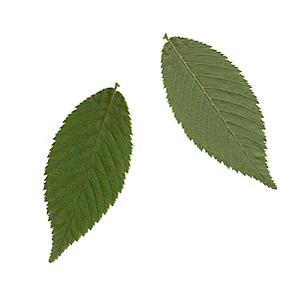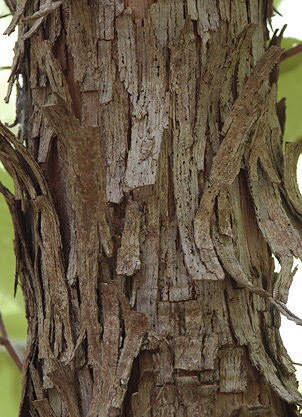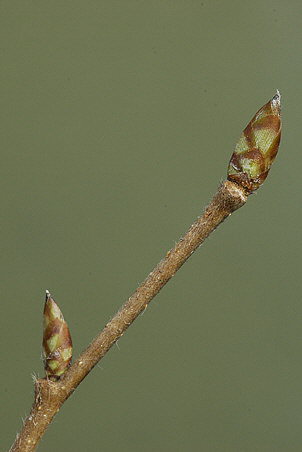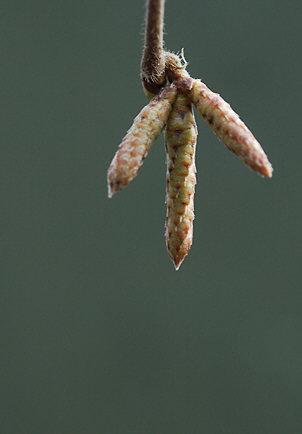| |
|
| |
 |
| |
Eastern Hophornbeam Leaf |
Identification:
The leaves of the Eastern Hophornbeam have a light brown color in
winter and often cling to its branches through much of the season.
The leaves are simple,
alternate and
doubly-serrate, darker on the upper surface
and lighter below. The veins branch one to several times as
they approach the margin. Each leaf is about 3 inches long.
Note the alternate branching pattern on the tree.
| |
|
 |
|
|
Eastern Hophornbeam Bark |
The bark of the Eastern Hophornbeam
is reddish brown or bronze
when young, becoming gray-brown, shredded and flaky as the tree
ages. On older trees the bark appears quite similar to the
Eastern Redcedar.
| |
|
| |
 |
| |
Eastern Hophornbeam Buds |
The twigs of the Eastern
Hophornbeam are dark reddish brown and slender. They are
sometimes lightly hairy. The buds are 1/8 inch to 1/4 inch
long, yellow-green with dark brown edges. The scales are
imbricate. The buds are usually vertically striated,
a feature which can be seen with a hand lens.
Other Uses
and Lore:
The
genus name, Ostrya, is from the Greek meaning a tree with
hard wood. Another name for the tree is “Ironwood.” In fact, the
eastern hophornbeam’s wood is harder than oak, ash, hickory or
persimmon. Only dogwood is harder. In times past its wood was used
for the handles of mallets and axes. The fruits provide food for
northern bobwhite, white-tailed deer and eastern cottontail rabbits.
The Trail From
Station Four to Station Five
 |
|
Emerging Eastern Hophornbeam Catkins |
As you continue
to descend towards Station Five you may be surprised to see how many
Eastern Hophornbeams there are along this section of the trail.
Since these trees hold on to their light-brown leaves for most of
the winter months, they are fairly easy to pick out among all of the
bare branches of other species. Later in the winter, look for
the emerging catkins at the end of the Eastern Hophornbeam branches.
Station Five is on the right side of the trail and is not far.
|

